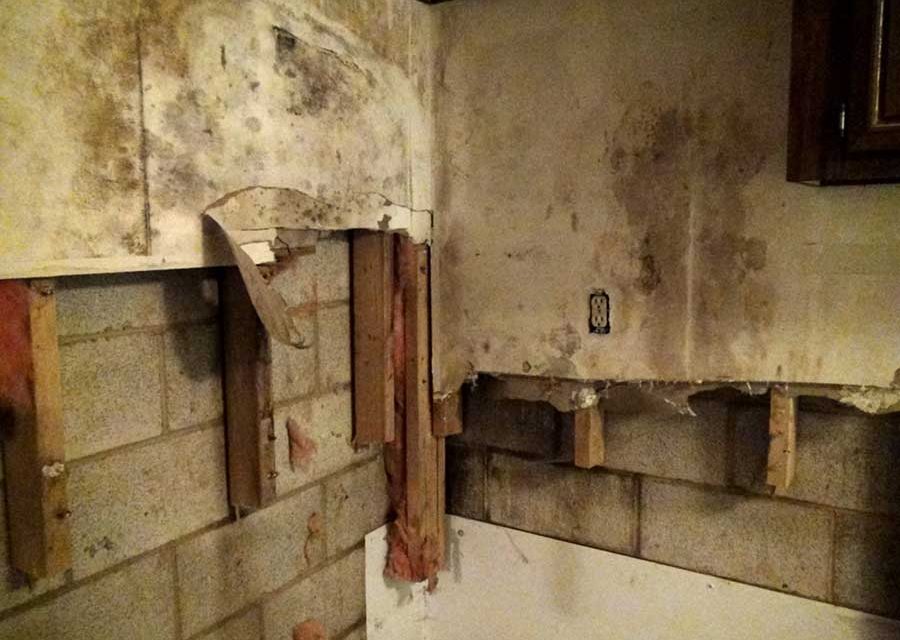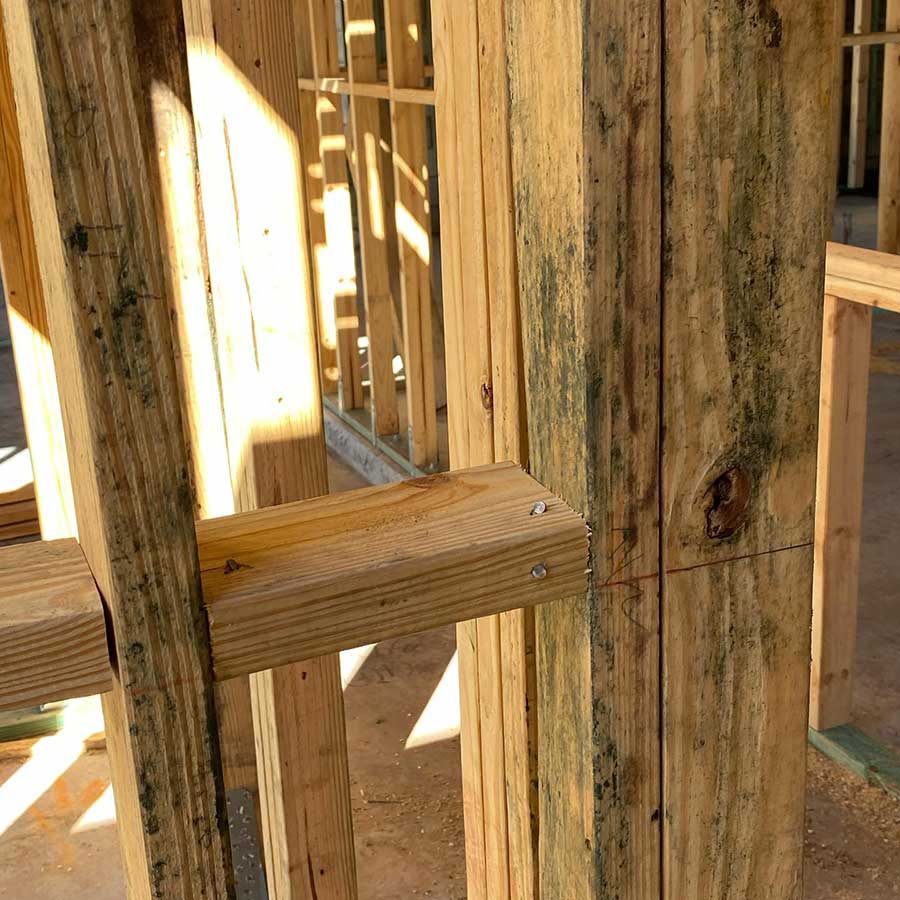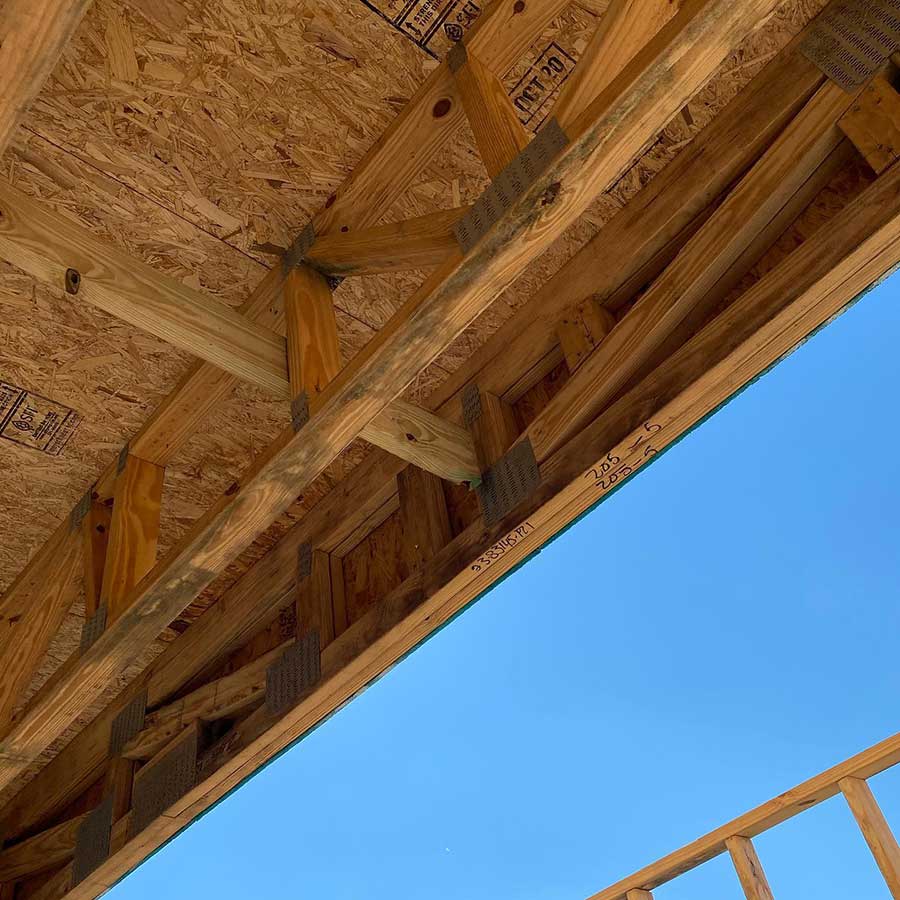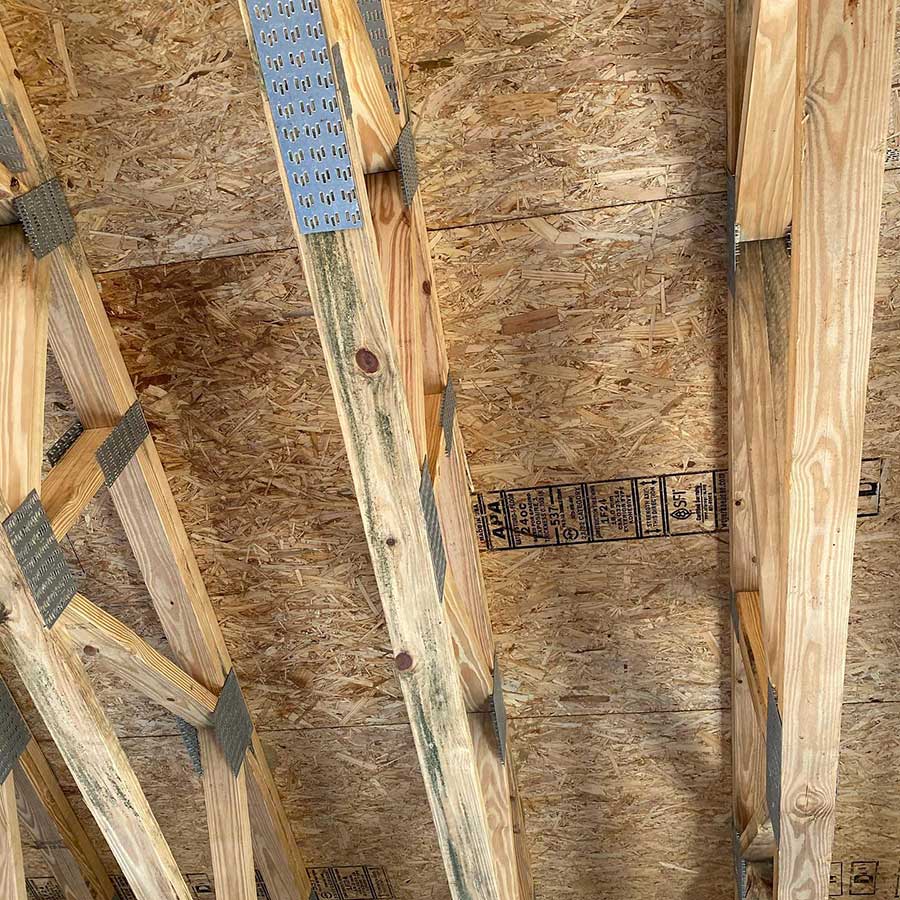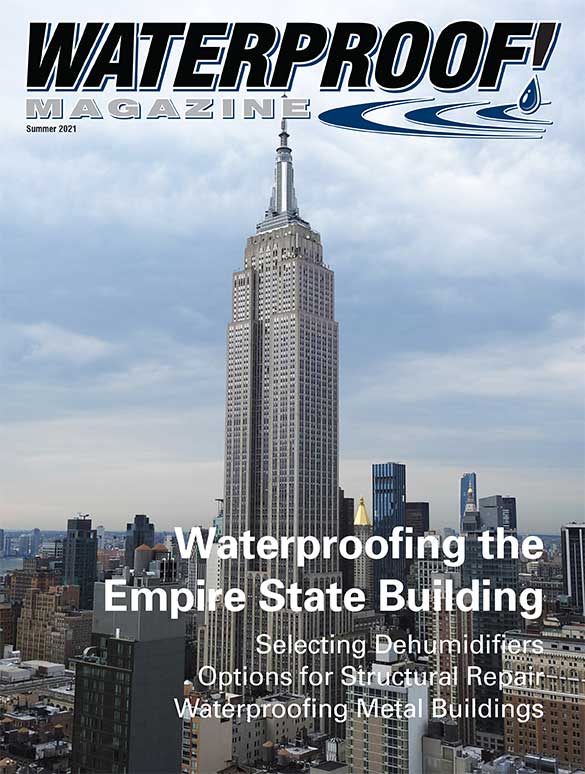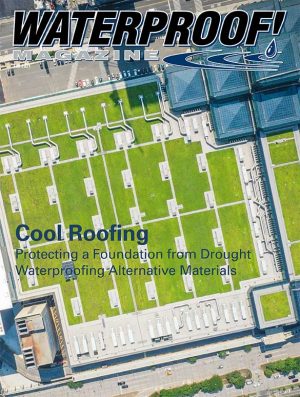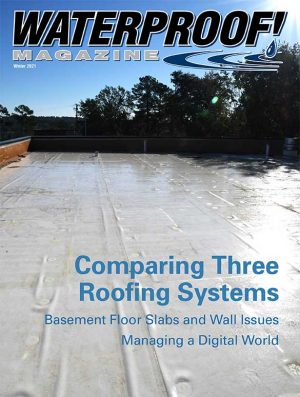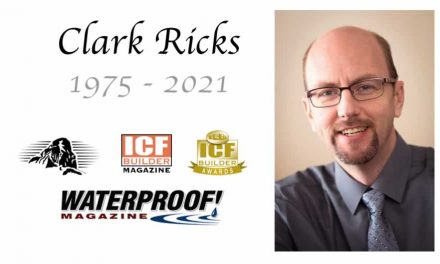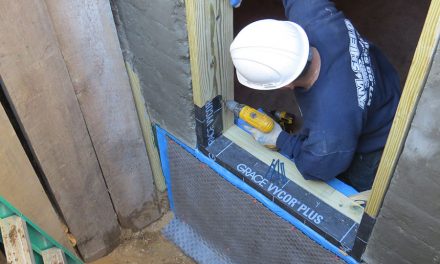By Michael Rubino
It’s More Common Than You think Tips on how to prevent a costly remediation.
As a mold expert, I am constantly encountering people with major mold issues in their home. Often, the high remediation cost has led people to look towards new construction in order to live in a mold-free home. Their logic is that a new home would never have mold because it doesn’t have a history of water damage. Unfortunately, this is wishful thinking.
In certain parts of the country, poor construction practices are leading to mold growth in newly constructed homes. On the surface, it seems unfathomable that mold could manifest itself in new construction, but it’s happening. I’m witnessing it firsthand, as the home I am currently having built in the Tampa, Florida, area is covered in mold.
There are two key driving factors leading to mold growth in new construction: improper installation of vapor barriers and poor lumber storage.
The vapor barrier is the home’s initial line of defense against moisture intrusion. A poorly installed vapor barrier will allow moisture or water to intrude. The slightest rip or tear can negate the purpose of the barrier and allow moisture intrusion, which can create an opportunity for mold to grow in between the concrete slab and the layers of material that you plan to install on top of the slab.
This is exactly what happened during my new construction build and as a result, I had immediately requested the builder to switch to tile. The reason I selected tile was because tile would be bonded directly to the slab, removing the additional layers where moisture can become trapped in between.
Simply put, a vapor barrier is supposed to stop water and moisture from intruding into the slab but it only works if it’s perfectly sealed.
I plead with you, please take your time when installing a vapor barrier, and know that the slightest tear could potentially lead to costly remediation in the future.
Another key issue that builders often neglect is lumber storage. When you accept delivery of lumber, is it stored on the ground, exposed to moisture? If it sits there for weeks at a time before the crew is ready to erect the frame, odds are it will be exposed to the elements.
On the surface, this might not sound too bad, but from a scientific standpoint, mold is very common in the soil. When it rains, having the lumber resting in the mud can cause excess moisture to remain in the wood for much longer than 48 hours. This creates the perfect opportunity for mold to grow on the lumber, considering mold can grow in as short a time as 48 hours.
A simple solution to prevent this would be to deliver the lumber on cribbing that can keep the lumber elevated off of the soil. From there it can be protected from the elements using tarps, until the framers are ready to begin.
The next problem as it relates to lumber is the presence of moisture as it’s insulated. This can be especially dangerous if you are utilizing spray foam as your preferred form of insulation. When you apply spray foam on lumber with a high moisture content, the spray foam will keep that moisture present by trapping the moisture in between the wood and insulation. This causes another opportunity for mold to grow.
Implementing a dehumidification process to dry out the space properly before installing any insulation or drywall will go a long way in ensuring that you don’t have any opportunity for mold to grow throughout the beginning stages of construction.
Let’s pivot back to my home that is currently under construction. If you take a close look at the photos in this article, you’ll see that there’s mold all over the framing. Had I neglected to catch this and bring it to the builder’s attention, I would have undoubtedly had mold in my brand new home from the first day that I moved in.
Thankfully, the builder remediated the property to my standards, and we’re moving forward with construction.
As a mold expert, I knew to look for these things. What will happen when the average consumer moves into a new home and is greeted by a mold infestation? Each home builder runs the risk of costly litigation and remediation. My goal is to help builders avoid these costly expenses by being mindful of mold before there is even a shovel in the ground.
In addition to vapor barriers and lumber, I highly recommend every builder also be mindful of the temperature differentials between conditioned spaces and non-conditioned spaces. I recently had a client where the garage bays were open to the first floor living area without any separation. This allowed non-conditioned humid air to mix with conditioned cool air and create a dew point on the back of the ceiling. This resulted in mold growth throughout his ceiling on the first floor. The ceiling had to be remediated and from there, structural blocking had to be installed to prevent the exchange of air from the garage to the living space.
Additionally, ensuring that attics are well insulated against the living spaces below to prevent a dew point from developing due to temperature differentials. This is especially important with duct work as you’ll develop condensation around the duct work if it isn’t appropriately insulated. Another key factor is to seal up well around the register boxes and any other penetrations where ductwork and other mechanical components enter from a conditioned space into a non-conditioned space.
As construction professionals, I implore you to add mold to the growing list of concerns you have when building a new home. The awareness of the harmful effects mold has on the body is growing every year. With that, we need to all do our best to prevent this issue from occurring in new construction. A few simple steps can prevent a major mold headache for you and your customers.
Michael Rubino is “The Mold Medic” and President of All American Restoration (www.allamericanrestoration.com). He is a council-certified Mold Remediator by IICRC and ACAC and a member of the Indoor Air Quality Association. Rubino specializes in working with people who are sensitive to mold. He is the author of “The Mold Medic: An Expert’s Guide on Mold Removal.”
Summer 2021 Back Issue
$4.95
Selecting Dehumidifiers
Options for Structural Repair: Crack Repair, Carbon Fiber, Piering, Grouting
Waterproofing Metal Buildings
Mold Growth in New Construction
Waterproofing and Renovating the Empire State Building
AVAILABLE AS DIGITAL DOWNLOAD ONLY
Description
Description
Selecting Dehumidifiers
By Vanessa Salvia
Many homeowners think they can buy a dehumidifier off the shelf of a big box store and plug it in down in their basement. But there are many problems with this approach, including inadequate drainage, inadequate air movement, lack of air filtration, and sometimes catastrophic failure.
Options for Structural Repair: Crack Repair, Carbon Fiber, Piering, Grouting
By Vanessa Salvia
Here’s a primer on the four major aspects of repair when there is a structural or non-structural issue with a basement. It takes some skill to discern which approach is best, especially with regard to cracking, and the experts we talked to broke it down for us.
Waterproofing Metal Buildings
By Vanessa Salvia
Metal structures have a lot of advantages, but when it comes to waterproofing they need special consideration. Many waterproofing membranes aren’t designed to be under metal. Since a metal structure bakes all day in hot sun, the materials need to be formulated for high temperatures.
Mold Growth in New Construction
By Michael Rubino
A mold expert explains how owners of new homes are regularly encountering major mold issues. Just because a home has no water damage doesn’t mean it is immune to mold.
Waterproofing and Renovating the Empire State Building
By Vanessa Salvia
One of the most iconic buildings received a much-needed facelift. A recent waterproofing and renovation project restored the Art Deco luster of the Empire State Building, the world-renowned 102-story skyscraper in New York City.
Additional Info
Additional information
| Magazine Format | Digital Download Magazine, Print Mailed Magazine |
|---|

